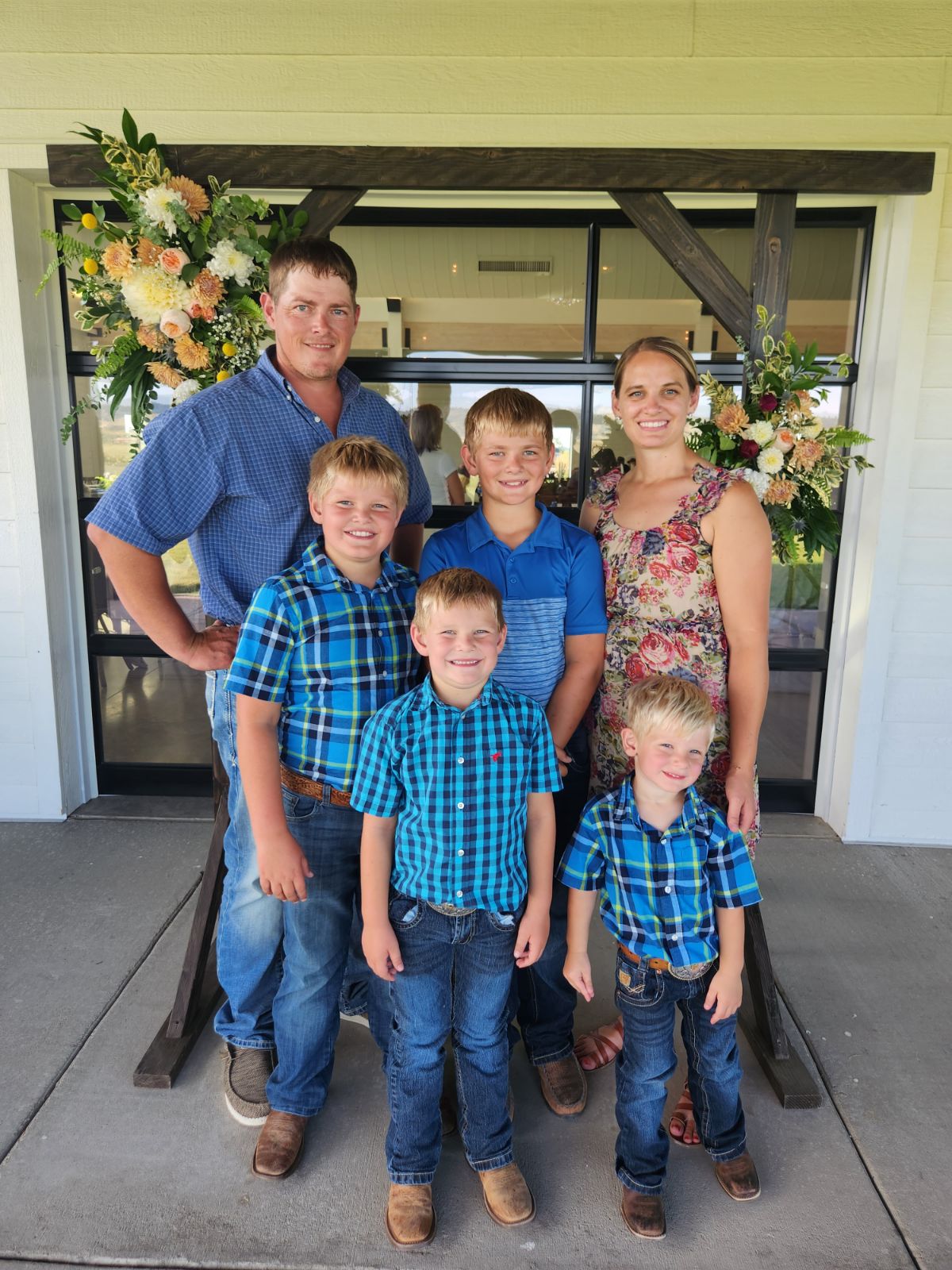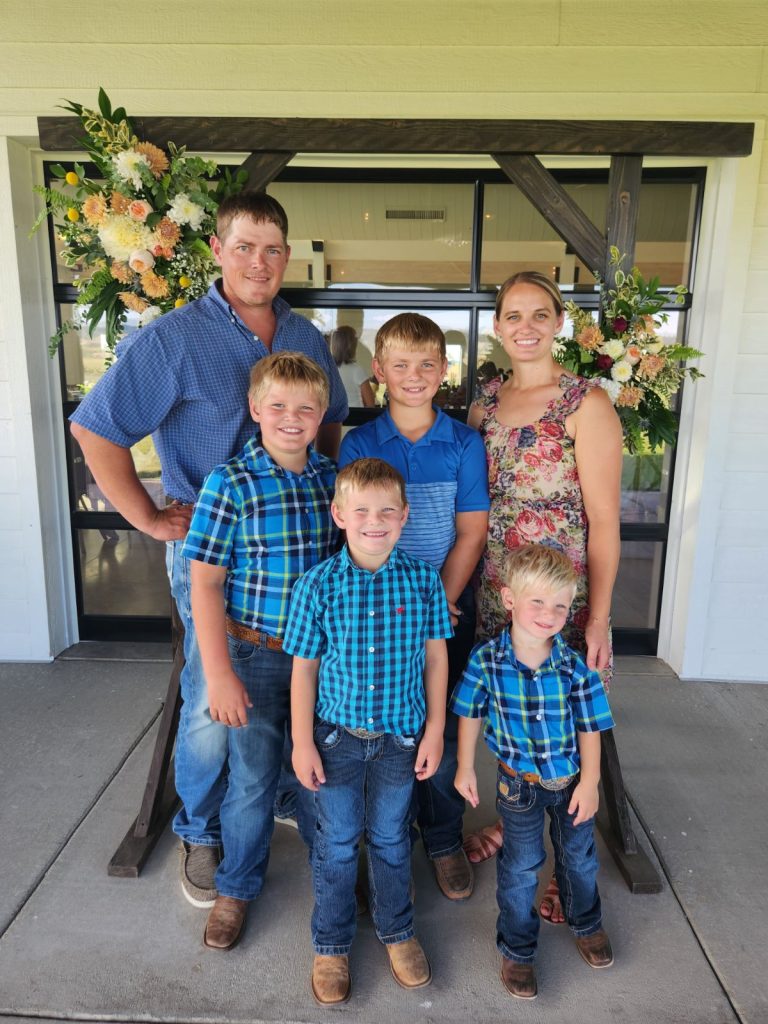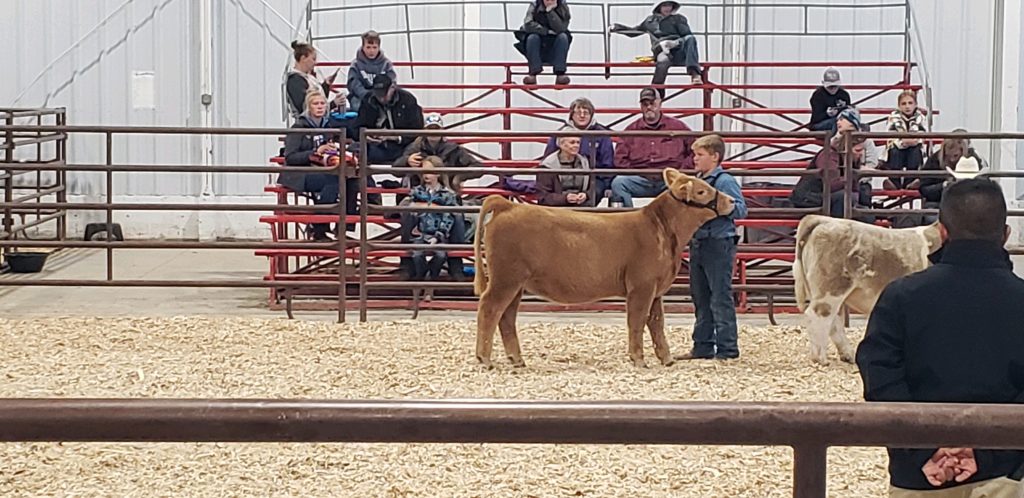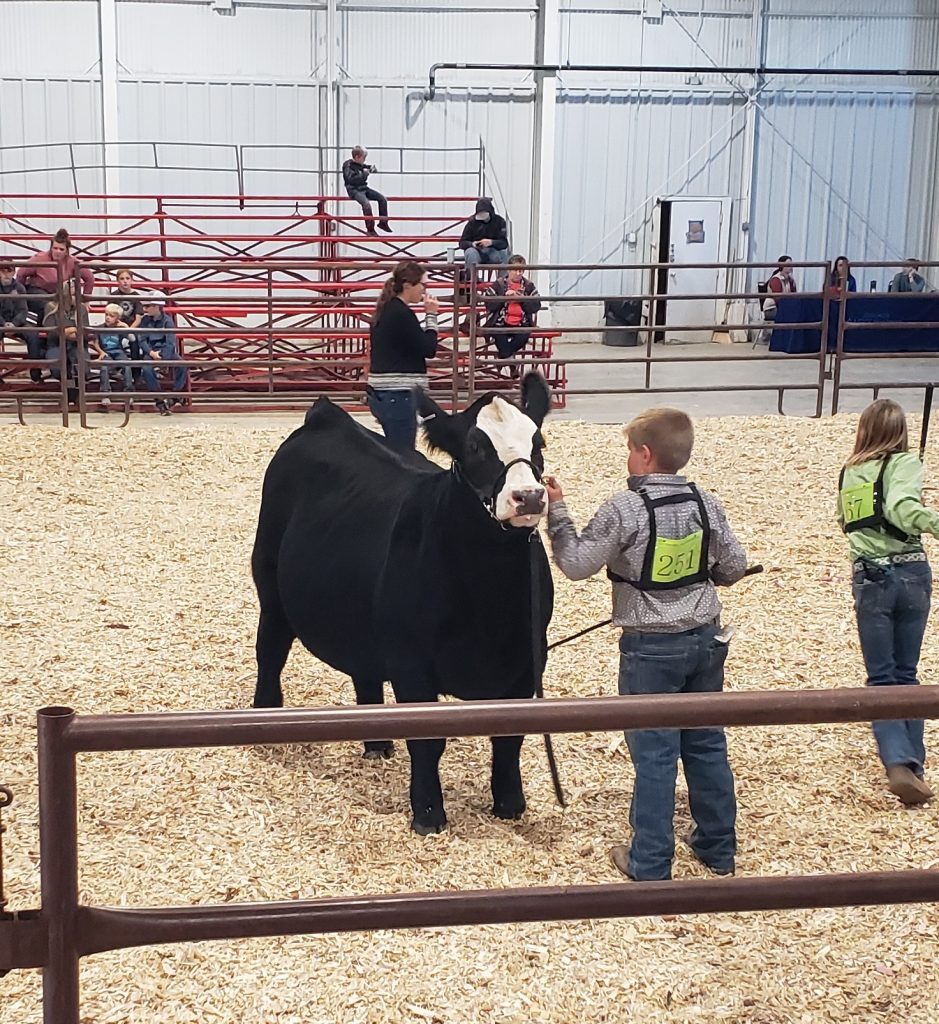Urban Farm/Ranch Family

By Lura Roti for South Dakota Farmers Union
Ryan Urban is a fourth-generation Brule County cattle producer who also happens to raise grain and forage crops.
“When people ask if we are farmers or ranchers, I always say, ‘we are cattle people who farm on the side.’ If you take care of the cows, they will take care of you,” said the 36-year-old.
Ryan explained that all decisions made on the family operation are influenced by their cattle: corn, soybeans and cover crops are planted with winter grazing in mind. Miles of fencing and waterlines have been installed over the years to maximize grassland health and grazing opportunities.
Strongly influenced by his dad, Raymond, and his desire to increase soil and grassland health, Ryan continues his dad’s legacy. “Thirty years ago, Dad went 100 percent no-till,” Ryan said. “Growing up, no one knew what a cover crop was. I think my dad was the first guy in the area to implement cover crops.”
One of the first major decisions Ryan made on his own concerning the family operation was the design of their permanent grazing rotation.
“The summer after I graduated high school it was really dry and the cows got to pushing on the electric fencing, so our rotational grazing almost failed. That fall, I was a freshman at South Dakota State University, sitting in a genetics class and not paying attention because I was drawing up a permanent rotation on a piece of notebook paper.”
That weekend he showed the plan to Raymond and got the go-ahead. The men worked with Natural Resources Conservation Service’s Environmental Quality Incentive Program (EQIP) to cost-share fencing and tank sites.
Today, the Urban grassland is broken into 40-acre pastures that allow the family to rotate 150 pairs through about every two days. “We do intensive grazing. When grass is growing fast, we move them fast; when grass slows down, we slow down the rotation.”
To maximize winter grazing, Ryan plants acres of cropland to diverse cover crop mixes. Standing in the middle of a mature 13-species mix he explained that he can graze 300 cows on a 10-acre section for one week.
“This cover crop mix will give me 70 days of winter grazing,” Ryan said.
Resilience
In 2015, cancer took Ryan’s dad, Raymond. Today, Ryan raises crops and cattle in partnership with his mom, Janice, wife, Samantha, and their four sons: Trace, 12; Huntley, 10; Rhett, 7; and Briggs, 3.
“Returning home to raise cattle was always my plan,” explained Ryan, who bought his first cows as an 8-year-old with the help of a Farm Service Agency loan.
Reflecting on his and Samantha’s journey in production agriculture, as well as his parents’ journey, Ryan said the word “resilience” comes to mind.
“Every day on the farm brings something different. It could be good. It could be bad. But you need to roll with it,” Ryan said. “Farm and ranch people are historically resilient. Some may call us stubborn, but I like to call us resilient.”
Ryan’s parents, Raymond and Janice, purchased the farm 20 miles northwest from Kimball in 1985.
“My uncle got the original homeplace, so my dad knew if he wanted to farm, he would have to build this up himself,” Ryan said.
The mid-’80s were the days of 19-percent interest rates. And although his parents did a good job keeping financial struggles to themselves, Ryan said he and his siblings heard enough chatter to understand money was tight.
Like his parents, Ryan and Samantha’s journey has not been without challenges. They are high school sweethearts and are both graduates of SDSU. Ryan has degrees in animal science, ag business and marketing, and Samantha has a degree in hotel and hospitality management. The couple married in the summer of 2010, just after Ryan graduated.
To help the operation partially support two families – Samantha has always worked full-time off the farm/ranch – Ryan began looking for more land so they could expand their herd.
“Dad found a little ad in the Green Sheet, it could not have been this big,” said Ryan, holding his fingers about an inch apart. “Dad said, ‘you need to call that guy.’”
Ryan made the call and spoke to a West River rancher looking to sell some rangeland near Fairpoint.
“Long story short, he was willing to work with me. He told me there was an out-of-state investor interested in the land, but if he could have a young guy who wanted this land for cattle, he would give me preference,” Ryan said.
Samantha’s dad, Bill, partnered with them to buy the land and Ryan found someone he could pay to keep an eye on his cattle. But he said having half his herd summering four-and-a-half hours from the homeplace comes with its own challenges.



It Takes a Village
The first summer they trailered half their herd to summer on the land they had to bring them home early because they ran into bad water. The second year was Storm Atlas.
“I heard a storm was coming. We had trucks lined up to bring the cows home the following Monday. I called the truckers to see if there was any way we could bring them home early and they said, ‘your cows have been through a blizzard before.’”
The operation lost 200 cows to the October 2013 Storm Atlas.
Although the experience was a nightmare, Ryan said through the experience he made a lifelong friend in his neighbor. “I was probably the first guy from this side of the state to go out there. The roads were still closed, but I followed a snowplow from Howe’s Corner to Union Center and then unloaded my snowmobile and took it out to where my cattle were. A neighbor I never met, who lost 800 head, helped me round up what cattle we could. He told me to leave my cattle at his place so they could recover from the stress before hauling them home.”
Fortunately, since summer 2014, hauling cattle west for summer pasture has worked out well for the couple.
As their herd has grown, so has their family. Samantha says she is happy she and Ryan get to raise their sons on the farm/ ranch.
“I grew up in Kimball, so I had to learn a lot moving out here. I’m still learning, but I am glad we get to raise the boys out here,” Samantha said. “It is beautiful out here and the boys get to see their dad working hard and they can run and play outside in these wide-open spaces and not be confined to cement.” She added that with four young children, it is helpful to live just a half mile from Grandma Jan and have Grandma Patti in town.
“Thank goodness we have a village right here,” said Samantha.

